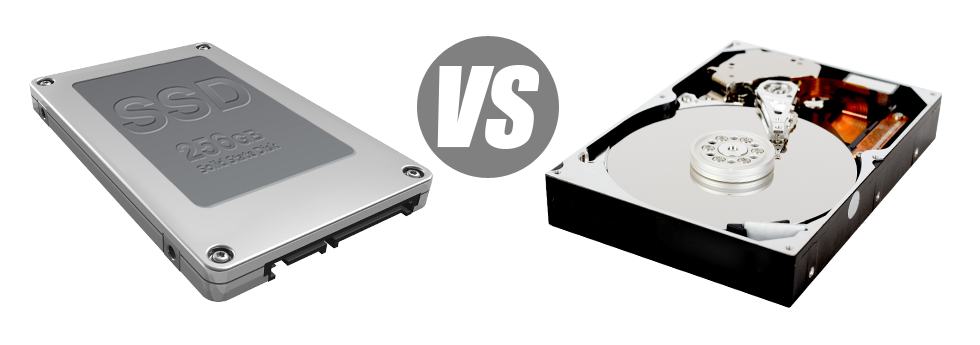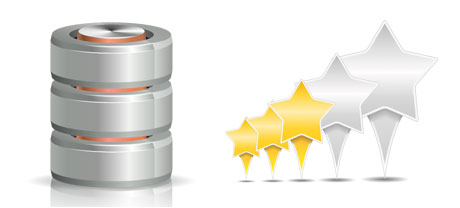For decades there was just one single reliable option to keep info on a personal computer – with a disk drive (HDD). Having said that, this type of technology is currently demonstrating its age – hard disks are noisy and sluggish; they’re power–hungry and tend to produce a lot of heat for the duration of intensive procedures.
SSD drives, on the contrary, are fast, take in a smaller amount energy and they are much cooler. They furnish an exciting new strategy to file accessibility and storage and are years in advance of HDDs regarding file read/write speed, I/O performance as well as energy capability. See how HDDs fare up against the more recent SSD drives.
1. Access Time
SSD drives provide a fresh & ground breaking solution to file storage in accordance with the use of electronic interfaces in place of any moving parts and turning disks. This completely new technology is noticeably faster, making it possible for a 0.1 millisecond file accessibility time.
HDD drives even now work with the exact same fundamental data access concept that’s actually created in the 1950s. Despite the fact that it was vastly advanced consequently, it’s sluggish in comparison with what SSDs will offer. HDD drives’ data file access rate varies somewhere between 5 and 8 milliseconds.
2. Random I/O Performance
On account of the exact same radical method which allows for faster access times, you too can appreciate far better I/O performance with SSD drives. They can perform two times as many functions within a given time in comparison with an HDD drive.
An SSD can manage a minimum of 6000 IO’s per second.
With a HDD drive, the I/O performance gradually enhances the more you use the drive. Nonetheless, in the past it actually reaches a certain restriction, it can’t get swifter. And due to the now–old technology, that I/O limitation is a lot lower than what you might get with a SSD.
HDD are only able to go as much as 400 IO’s per second.
3. Reliability
The absence of moving elements and rotating disks inside SSD drives, and the recent advances in electrical interface technology have resulted in a significantly safer data file storage device, having a common failing rate of 0.5%.
To have an HDD drive to work, it has to spin 2 metal hard disks at more than 7200 rpm, retaining them magnetically stable in mid–air. There is a number of moving parts, motors, magnets and other tools stuffed in a tiny place. Hence it’s no wonder that the standard rate of failure of the HDD drive ranges somewhere between 2% and 5%.
4. Energy Conservation
SSD drives are usually smaller than HDD drives and also they do not have virtually any moving elements at all. As a result they don’t make so much heat and need significantly less power to operate and fewer power for cooling down reasons.
SSDs consume amongst 2 and 5 watts.
HDD drives can be notorious for getting loud; they can be at risk from getting hot and when there are several disk drives in a server, you have to have an additional air conditioning unit only for them.
In general, HDDs consume in between 6 and 15 watts.
5. CPU Power
The speedier the file access rate is, the swifter the data file calls can be delt with. Consequently the CPU will not have to save assets looking forward to the SSD to reply back.
The regular I/O wait for SSD drives is barely 1%.
When compared to SSDs, HDDs allow for not so quick file access speeds. The CPU must wait around for the HDD to send back the inquired data file, reserving its assets meanwhile.
The typical I/O wait for HDD drives is approximately 7%.
6.Input/Output Request Times
It’s time for several real–world examples. We, at Titan Guard Cloud Hosting, produced an entire system backup on a hosting server only using SSDs for file storage purposes. During that operation, the average service time for any I/O query kept under 20 ms.
Throughout the identical lab tests using the same server, this time equipped out utilizing HDDs, functionality was substantially slow. All through the server back up process, the typical service time for any I/O demands ranged somewhere between 400 and 500 ms.
7. Backup Rates
One more real–life advancement is the rate at which the back up has been developed. With SSDs, a server back–up currently will take under 6 hours implementing Titan Guard Cloud Hosting’s hosting server–enhanced software solutions.
Over the years, we’ve made use of mostly HDD drives on our machines and we’re familiar with their general performance. On a web server pre–loaded with HDD drives, a complete web server back–up often takes around 20 to 24 hours.
Should you wish to straight away raise the effectiveness of your web sites and never have to change any code, an SSD–equipped website hosting solution will be a very good option. Check out our Linux shared hosting packages packages and our Linux VPS packages – our solutions have swift SSD drives and are offered at competitive prices.
Hepsia
- Live Demo
Service guarantees
- Our Virtual Private Servers include no installation service fees and operate in a secure network delivering 99.9% of uptime. Full root server access guaranteed.
Compare our prices
- Examine the resources and capabilities offered by Titan Guard Cloud Hosting’s Virtual Private Servers. You can start with a smaller VPS configuration and move up with only a mouse click as your necessities grow.
- Compare our hosting plans
Contact Us
- It is easy to get in contact with us 24x7x365 by email or by utilizing our really–fast ticketing platform. Titan Guard Cloud Hosting offers a 1–hour reply–back time frame warranty.














